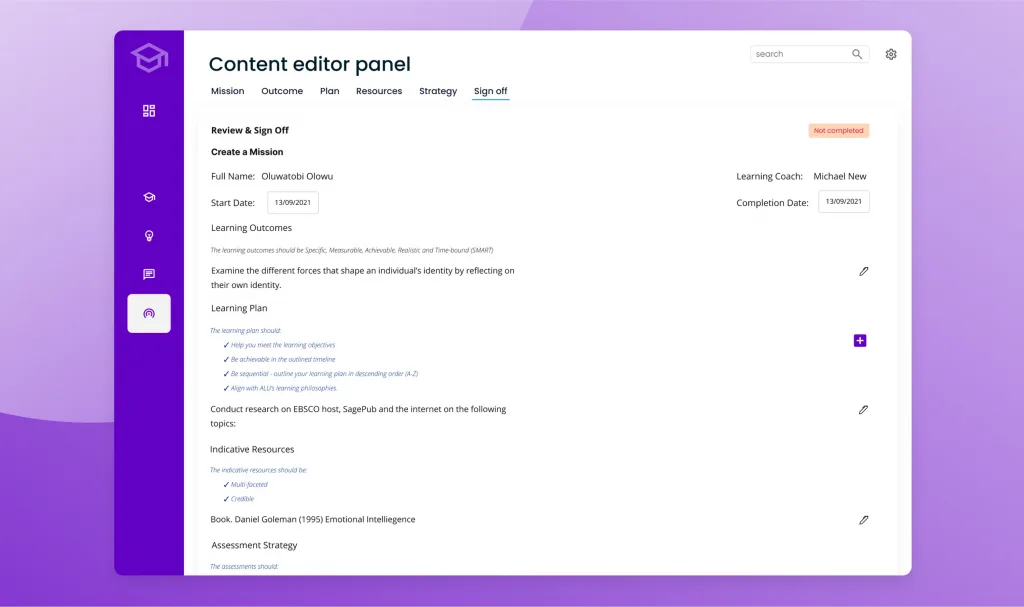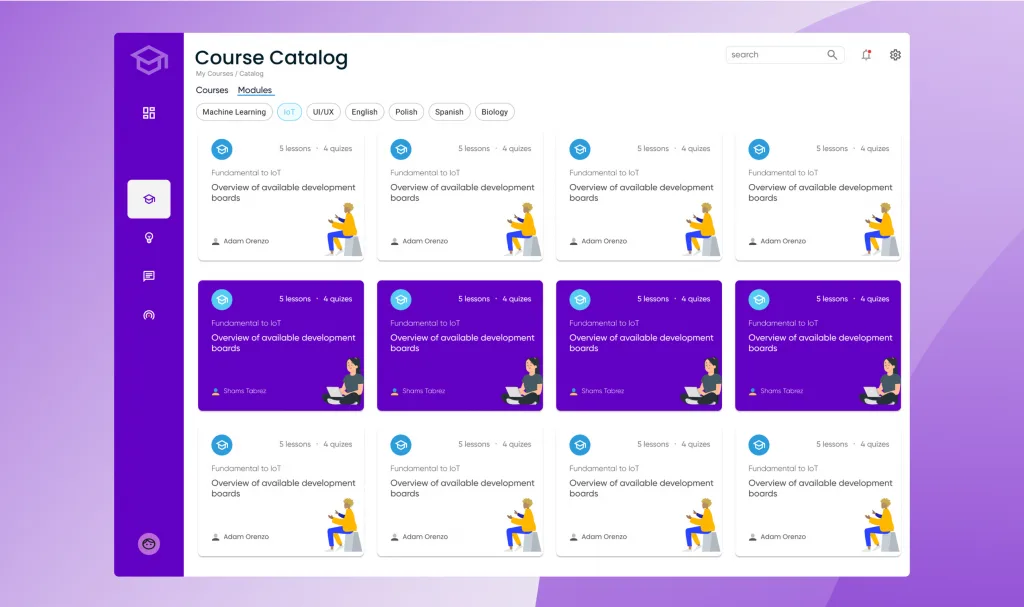

End-to-End Development of an online e-learning platform
ABOUT PROJECT
Our client is a leading company in the field of corporate training. Their platform revolutionizes enterprise learning by simplifying and speeding up the process. With an e-learning platform, you can create and deliver beautifully designed text-based courses directly to learners through popular chat apps, making learning accessible on the go. The platform uses micro-learning and spaced learning principles, ensuring practical knowledge retention. Interactive exercises can be included within the learner chat client, enhancing engagement and providing real-time statistics on course progress.
THE SPECIALISTS WE WERE WORKING WITH
The firm came to us for outsourcing because they didn’t have an internal department for software development.
PARTNERSHIP GOAL
The client contacted us with the need to develop a universal online learning system that would include teachers’ workrooms with the ability to create new learning materials by groups and educational levels and a multichannel distribution system for learning materials. Thanks to the work of our team, the client successfully ran a multichannel online e-learning platform.
THE TECHNOLOGIES WE USED IN THE PROJECT:
Thinking about
outsourcing?
Innovate, market faster, and gain a competitive edge with our services.
WHAT WE DID
- Development of the interface of the project for creating educational content.
- Implemented the ability to deliver educational content to students through various channels.
- Developed a lecturer’s admin panel.
- Developed the functionality of analytics of learning outcomes for students.
- Implemented the functionality of multilingual translation of educational content using a neural network.
- Implemented connection of third-party services: chatbots, and integration with messengers.
WHAT THE COLLABORATION Process Looks Like
- We discuss what goals your new software should achieve.
- We analyze the current processes and needs of your business.
- Our team ensures the improvement of the analyzed process.
- Together, we approve the optimal solution to meet your needs.
- Our team comes up with how the software will look and operate.
- We create a solution step by step with constant quality control.
- We do quality manual and automated testing of products.
- We are ensuring that all stages of development are completed for a successful release.
Implemented Features
Content editor panel
The Content Editor panel for the online education platform provides various features and functions to facilitate the creation and editing of content by teachers. It allows you to create genuinely unique learning materials. Our Content Editor panel has a lightweight editing mechanism compared to other HTML web editors. The editor provides formatting options such as list numbering, bullet selection, symbols, block quotes, horizontal alignment rules, and various media like pictures, documents, and emoticons.

Translation of content through a neural network
Translation of content through a neural network uses a neural network-based system to convert text or other forms of content from one language to another. This approach utilizes deep learning techniques to train a neural network on large amounts of multilingual data, allowing it to learn the patterns and structures of different languages. By leveraging this learned knowledge, the neural network can generate translations that capture the original content’s meaning and context. Implementing content translation through a neural network can offer several benefits for an online educational platform. It enables the platform to provide multilingual support, allowing students from different language backgrounds to access and understand the learning materials. The neural network-based translation system can automatically process and translate course content, instructional materials, and communication within the platform, facilitating effective communication and knowledge dissemination across language barriers.


Yuliia Borodavko
Client Engagement Director



